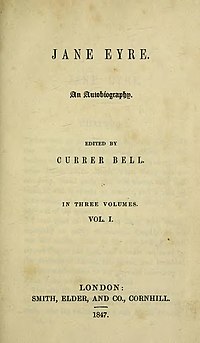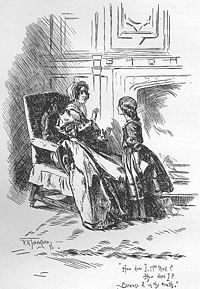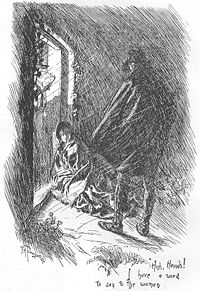This article is about the novel. For other uses, see Jane Eyre (disambiguation).
| Jane Eyre | |
|---|---|
| Author(s) | Charlotte Brontë |
| Country | England |
| Language | English |
| Genre(s) | Gothic fiction, social criticism, bildungsroman |
| Publisher | Smith, Elder, and Company |
| Publication date | 16 October 1847 |
| Media type | |
| Read online | Jane Eyre at Wikisource |



No comments:
Post a Comment